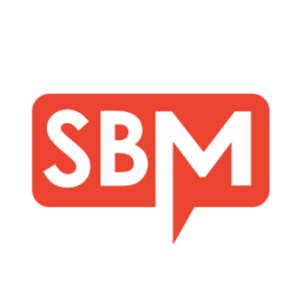The Facebook ads platform is one of the top pay-per-click (PPC) advertising platforms available today. Currently, more than 7 million brands are trying to reach their target audience among Facebook’s 1.59 billion daily active users, making it the most effective social platform you can use for school marketing.
Some of us remember when schools could facilitate inquiries organically. Sadly, that era is over. Even though Facebook Ads are an essential part of any effective ad strategy, Facebook is strictly “pay-to-play”, and purchasers of paid media need to go above and beyond posting to the newsfeed to be successful.
If you’re still not sure Facebook Ads are a good investment for your school, consider these 2019 statistics from Hubspot:
The average price for Facebook Ads decreased by 2 percent, while ad impressions grew by 34 percent.
The average cost-per-click (CPC) on Facebook is $1.72.
- Facebook video ads have a low cost-per-click (CPC) at $1.86.
The potential reach of Facebook advertising is 1.9 billion people.
In order to make Facebook Advertising a good investment for your school, you need to know how to develop highly-converting paid traffic ad campaigns.
As I delve into the specifics of how to make Facebook ads work for your school in 2020, I want to fold in a question I’m frequently asked by school marketers across the country.
The question I’m commonly asked is “When it comes to Facebook advertising, where should I be spending my time?”
Regardless of your role in your marketing department, whether manager, digital marketer, paid media buyer or other, this is a common question among school marketers.
The answer, of course, is “it depends”.
However, I have put together a rough estimate of how a full-time Facebook Ads Media Buyer might productively spend their time. This is one way to structure your day. If you are not a full-time paid media manager, you can still apply this “formula” to how much time you have to allocate to Facebook advertising.
Here is a day-to-day scenario for you to consider:
9:00 – 10:00 AM – Reaction Time
Reaction time is where you check to see how things went since you last reviewed the performance of the ads. How are the statistics looking? Review your optimization process and make any scaling decisions you might want to make for the day.
10:00 – 10:45 AM – Build and Structure New Campaigns
If you want to build new campaigns, the best time to do this is in the morning because that’s when it’s easier for the Facebook algorithm to “digest” the information you’re feeding it. If you wait until the end of the day, you might feel rushed to try to get your ad’s “spin” out there. So if you can, launch new ads early in the day.
11:00 – NOON – Targeting and Avatar Research
Targeting and avatar research is essential when launching and managing Facebook ads.
NOON – 1:00 PM – Lunch
Be sure to take time away from the computer to have a healthy lunch and move your body.
1:00 – 2:30 PM – Team or Staff Meetings
Meeting with staff is an essential part of marketing, including Facebook advertising.
2:45 – 4:00 PM – Creative and/or Copy Focus
The creative and copy aspects of Facebook advertising can’t be underestimated. These are essential for success.
4:15 – 5:00 PM – Facebook Ads Research and Education
It is vital that we continue to educate ourselves on Facebook Advertising best practices
5:00 – 5:30 PM – Check Campaign Stats and Plan Next Day
It’s always a good idea to check your stats before you leave and prepare for your next day’s activities.
Now, let’s break down each time period and dive deeper into Facebook advertising best practices as they relate to each section.
Reaction Time
During the first hour of your day as a Facebook ads manager, follow this process:
- Check the statistics of your ads
- Make any optimization refinements and troubleshoot any issues. During this phase ask yourself “What’s working and why.” Every day, Facebook’s algorithm is getting smarter, making this the best time to be a Facebook Ads manager. The platform is getting simpler because Facebook is investing in artificial intelligence. Facebook knows that the easier and less time it takes advertisers to manage their campaigns and the better campaigns perform, the more money advertisers will spend.
*PRO TIP: Unless you’re going to optimize or scale your campaign, avoid making changes to your ads. All this does is reset your ad and the Facebook algorithm will start all over learning your campaign and finding the best audience. Make sure any changes you make are strategic and well thought-out.
The best Facebook Ads managers are detectives that know how to go in and figure out what the data means. If something isn’t working, take the time to figure out why it isn’t working.
Here is a quick, five-step troubleshooting process.
- Is your campaign getting REACH?
- Are you having trouble with ad policy? Was anything disapproved?
- Is there a billing issue?
- Is your objective the right one for this campaign?
- Is your audience size large enough?
- Have you allocated enough budget?
- Is your pixel set up correctly?
- Is your post-click experience CONVERTING?
- Reverse engineer your sales funnel to make sure each step is working correctly.
- Check the conversion rate on each landing page
- Use a heatmap to check the activity on each landing page
- Consider making changes and running A/B tests
- Does your offer resonate with your target audience?
- Are your ads working from a COPY / CREATIVE standpoint?
- Unique click-through rate – should be at least 1%
- Ad relevance diagnostics (new in 2019). (Used to be relevance ranking)
- Quality ranking
- Engagement rate ranking
- Conversion rate ranking
- Do you have a TARGETING issue?
- Are there any ad sets that stand out as underperformers or clear winners?
- What’s my cost per click?
- Is my targeting too narrow or too broad?
- Determine if you can SCALE any of your existing ads.
It is exciting when you are able to scale an ad that is performing successfully.
- Scaling looks different in 2020 due to Campaign Budget Optimization (CBO).
- CBO is sophisticated machine learning.
- Before CBO, marketers would set the budget at the ad set level. How it looked is there would be one campaign with multiple ad sets, each with their own budget. Under Ad Set Budget Optimization (ABO), Facebook would optimize each Ad Set.
- With CBO, we are setting the budget at the campaign level, allowing Facebook to optimize the entire campaign.
- As of this writing, Facebook is considering changing to exclusively CBO. Why would Facebook want to do this?
- Consistency in results (less swings day-to-day)
- Easier for ads manager
- Save time on optimization you can now use on offer, creative, copy, avatar, testing, increasing lifetime value, etc.
- CBO should only be used for scale. It should only be used when you have an offer you know converts, ads with social proof, targeting we’ve already proven and we’re ready to scale.
- If you’re building a campaign for scale:
- Use 1-5 ad sets with 5 – 30 million+ audience size
- 2-5 ads within each ad set (50% highest converters / 50% new)
- Set budget at the campaign level
- Data is more important than ever (quality and quantity)
- Do NOT tinker with your campaign. Don’t change anything at the ad set level! Don’t make any changes for at least 5-7 days.
- Only use minimum/maximum budget amounts if you need to.
- CBO is about amplification. Don’t amplify campaigns that don’t work or you’re not sure about.
- If you want to do testing, set up a separate campaign with one ad set per campaign. This is, in essence, a “go back” easy button strategy.
Build and Structure New Campaigns
The next hour of your day should be focused on building out new campaigns.
- Building a campaign is like building a house – you want a solid foundation and structure
- If you’re building a campaign for testing:
- Use 10+ ad sets
- Audience size should be 500K – 3 million
- Set budget at the Ad Set level
- If you’re building a campaign for scale:
- Use 1-5 ad sets
- Audience size 5-30+ million
- 2-5 ads in each ad set (50% highest converters / 50% new)
- Set budget at the Campaign Level
- If you’re building a retargeting campaign:
- Use one ad set
- Set your audience to what makes sense for your campaign
- Use 2-4 ads in each ad set
- Set budget at the campaign level
Targeting and Avatar Research
“If you build an awesome campaign but put it in front of the wrong people, it will fail.” ~ Molly Pittman, Digital Marketing Paid Advertising Expert, and Trainer
Spend time researching new audiences for new ad campaigns and existing campaigns.
Go deep into interest topic targeting.
- Where is your audience hanging out?
- What books, magazines, blogs, publications do they read?
- Who are your biggest competitors? Who else is vying for their attention?
- What tools/apps do they use?
- What events do they attend?
- What buzzwords do they use?
- What TV channels do they watch?
- What YouTube channels do they subscribe to?
Build your ad sets based on the interests you discover. Interest targeting is one of the biggest assets of Facebook marketing, so take your time and dive deep into interest targeting for your school marketing efforts.
Team and Staff Meetings
Team and staff meetings are about communication. It can be easy for Facebook ads managers to “hermit” down and not spend time communicating with other key individuals in your school.
Ads managers should be communicating and learning about:
- How ads are performing
- What events, activities and changes are happening in the school
- Customer service (feedback)
- Data and success metrics
- Tracking
- Tech issues
- Graphic design
Creative and/or Copy Focus
- The visual and copy aspects of advertising is critical. If you can’t entice someone to click on your ad, the rest of the strategy isn’t going to matter.
- Your creative and copy is the physical representation of your “hook”. How is your school going to transform the lives of your students? How can you represent this transformation in the best way using your copy and visuals?
- Be sure to focus on trust and social proof.
- One “copy formula” that seems to be working in 2020 is “See why”.
“See why 100% of parents of enrolled students rate OUR SCHOOL as BEST in student achievement”
- Don’t be afraid of controversy. The higher the engagement rate, the better your ads will perform.
- Editing in borders can help improve performance.
- Consider using interview videos that tell a story.
- Find ways to connect with your potential families and help them see how you will help their child succeed in your school.
- Storytelling is a powerful way to connect with your audience.
- Show before / after or pain / benefit.
- Logic (stats).
- Consider using polls within your Facebook Ads (set it up with different URLs depending on the response you receive to the poll). This is a new feature that was rolled out in Facebook Ads at the end of 2019.
- Consider testing with Messenger ads in 2020.
Facebook Ads Research and Education
You can get a lot of ideas for copy, creative and hooks from looking at what other brands are doing, often outside of the school marketing niche.
Consider looking at other ads in the Facebook Ads Library.
Invest in a course, listen to a podcast or read a blog post in order to stay current with what’s going on in the Facebook Advertising world.
Check Campaign Stats and Plan Next Day
Check stats once more at the end of the day to make sure there aren’t any “fires” you need to put out.
Then, it’s time to quickly plan and set intentions for tomorrow.
Are you planning any new launches? Are you hitting your goals?
Then disconnect and allow your mind to rest. Often, this is when you’ll get your best ideas!
Facebook Ads Manager has always been a quickly evolving platform, and even after spending the last year bogged down in privacy concerns, Facebook as still managed to roll out some incredible features that offer marketers new ways to reach your target audience.
As with all platforms, staying up to date with new changes – good and bad – will ensure you’re still at the top of your game, taking advantage of the most useful new features while navigating around any that don’t work for your school.
Agility is a key skill in advertising, especially when the platforms we rely on change so frequently.
Click here to read the original article posted by Brendan Schneider on SchneiderB Media on Jan 22, 2020.


![[COURSE] LinkedIn Advertising for Enrollment Managers](https://www.schoolhouse.agency/wp-content/uploads/2021/08/COURSE-LinkedIn-Advertising-for-Enrollment-Managers-1024x683.jpg)



